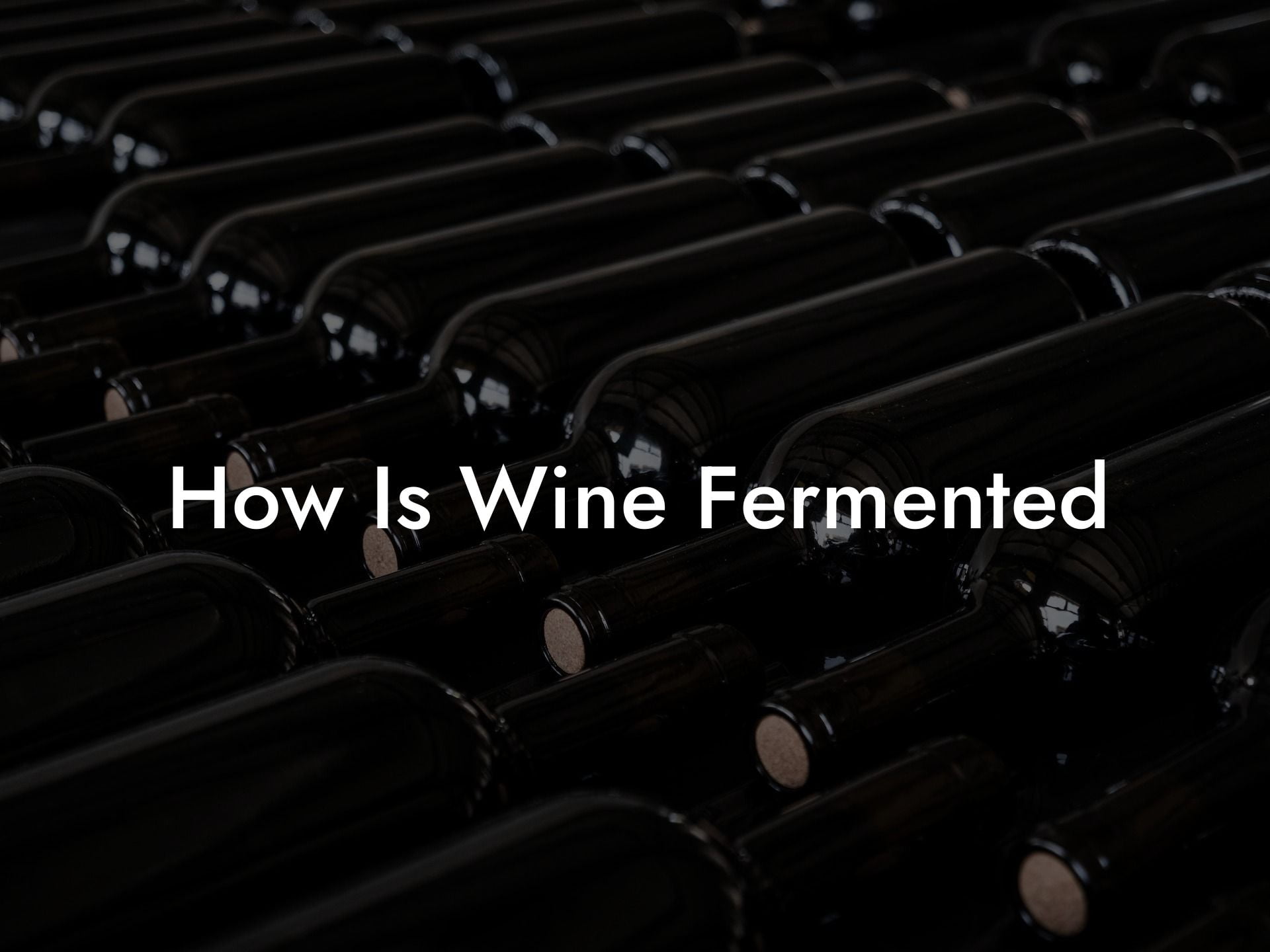Are you a wine enthusiast or just getting started on your wine journey? Have you ever wondered how that luscious liquid ends up in your glass, evoking notes of fruit, earth, and oak? Well, buckle up because we're going to dive into the fascinating world of wine fermentation! This essential process is responsible for turning simple grape juice into the world's most beloved beverage. Stay with us as we explore the ins and outs of wine fermentation, and who knows, you might just get an extra appreciation for your next glass.
How Is Wine Fermented Table of Contents
What is Fermentation?
Fermentation is a natural process by which microorganisms such as yeasts and bacteria convert sugars into other compounds like alcohol, carbon dioxide, and organic acids. In the context of wine, fermentation is the magical transformation that turns grape juice into a charming alcoholic drink.
The Role of Yeast in Wine Fermentation
While there are many types of yeast involved in the fermentation process, the most common and important one for winemaking is Saccharomyces cerevisiae. This yeast is responsible for breaking down the sugars found in grape juice (mainly glucose and fructose) and producing ethanol (alcohol) and carbon dioxide (CO2) as byproducts.
Do You Want to Win a Free Bottle of Wine?
Don't miss out on the opportunity to win a free bottle of wine every week.
Enter our weekly prize draw today!
Wild Yeast vs. Cultured Yeast
Winemakers have two options for the yeasts used in fermentation: wild yeasts that are naturally found on the grapes and in the winery, or cultured yeasts that have been selected for their desirable characteristics and are added to the juice.
- Wild Yeast: Using wild yeast can produce more complex and unique flavors, but the fermentation process can be less predictable and harder to control.
- Cultured Yeast: Cultured yeasts offer more predictability and consistency during the fermentation process but can result in more uniform flavors in the wine.
Stages of Wine Fermentation
1. Primary Fermentation
This is the initial stage where the yeast begins to consume the sugars found in the grape juice. The yeast population rapidly multiplies, producing alcohol and CO2 as byproducts. During primary fermentation, most of the sugar is converted, and the overall alcohol content of the wine increases. This stage is crucial for the development of flavors and aroma compounds in the wine.
2. Secondary Fermentation (Malolactic Fermentation)
Secondary fermentation is not always a required process, but it's common in red wines and some white wines like Chardonnay. Malolactic fermentation is conducted by lactic acid bacteria that convert malic acid into softer and less acidic lactic acid, adding smoothness and complexity to the wine's texture.
Temperature and Time
The temperature and duration of fermentation can significantly affect the final product. Higher temperatures can yield more intense and complex flavors but may also risk losing some delicate aromas. On the other hand, lower temperatures can preserve delicate aromatics but produce less intense flavors. The duration of fermentation varies depending on the wine style, grape variety, and winemaker's preference.
How Is Wine Fermented Example:
Imagine you're in a winery and witnessing the fermentation process. The winemaker has decided to use cultured yeast for better control over the fermentation process. The grape juice has been poured into a fermentation vessel, and the yeast has been added.
During the primary fermentation, the winemaker monitors the vessel's temperature to ensure the right balance between preserving aromas and developing flavors. The fermentation lasts around two weeks, after which the primary fermentation is completed.
Since this particular wine is a red wine, it undergoes secondary fermentation for malolactic fermentation. The lactic acid bacteria are introduced, and the wine's acidity gradually softens, enhancing its mouthfeel and overall complexity. Finally, after the desired result has been achieved, the fermentation process is completed, and the wine is ready for aging, blending, or bottling.
There you have it, a comprehensive look into the captivating process of wine fermentation. Whether you're a wine aficionado or a curious newcomer, understanding the basics of how wine is fermented can elevate your appreciation for this delightful beverage. Share this newfound knowledge with your wine-loving friends, and explore more fascinating wine guides on Black Wine Club. Cheers to deeper wine wisdom!
Do You Want to Win a Free Bottle of Wine?
Don't miss out on the opportunity to win a free bottle of wine every week.
Enter our weekly prize draw today!












